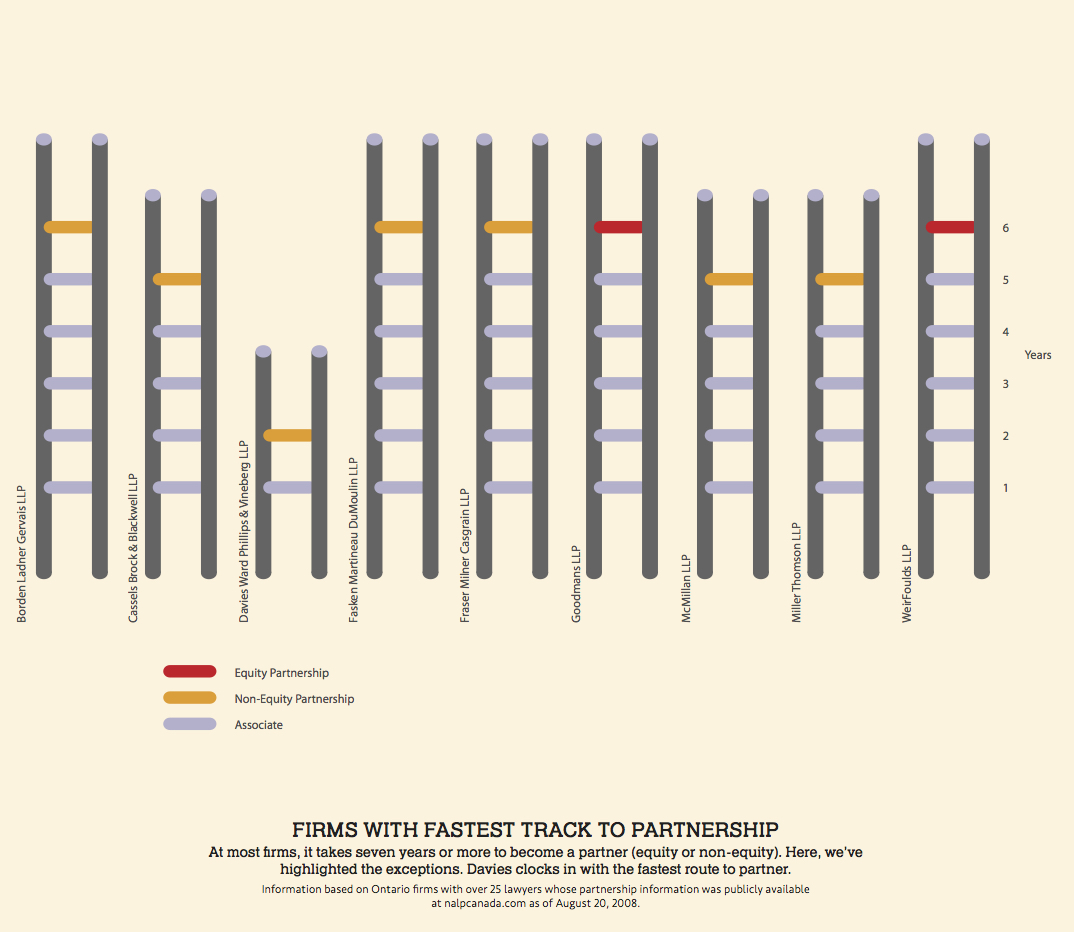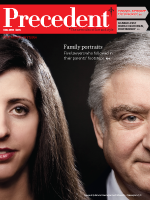
Ontario firms vary widely in the length of their partnership track — some take nearly a decade to pop the question, while others have their associates picking out china patterns as soon as they walk in the door.
Davies Ward Phillips & Vineberg LLP offers the quickest route to partner: Davies offers a “non-equity” partnership after two years, and lawyers can graduate to full equity partner — when the money really starts — within five years of practice.
“Our preference is to make people partners as quickly as possible,” says Jim Reid, a Davies partner and chair of the firm’s student committee. “The sooner you can make people feel like owners, the better the experience will be and the better the firm will be.” Reid says two years is enough to judge an associate’s skill and commitment.
Other firms prefer the slow-and-steady approach. “Partnership is just a dot on the calendar,” says Norm Bacal, co-managing partner at Heenan Blaikie LLP (partnership track: eight years and up). “Developing a practice is as important as anything else. That takes time.”
Two-tier partnership structures have become popular in the last decade. A non-equity partner gets to put “partner” on their business card, but often they have no vote, and get only a little extra money.
“If you want to be a cynic, you’d say it’s a way for the firm to delay the inevitable,” says Warren Bongard, vice-president of ZSA Legal Recruitment. “Which I don’t believe. [Non-equity partnership] sends a message to [associates] that they’re on track, but they still need to prove themselves.”
Not everyone agrees. “It’s basically a way to keep people on the hook,” says Mitch Frazer, a partner at Torys LLP, which has no formal non-equity tier. “From an associate’s perspective, I wouldn’t have wanted to be a non-equity partner. You can be stuck there for five years. It’s another hurdle.”

This story is from the 2008 edition of PrecedentJD Magazine
